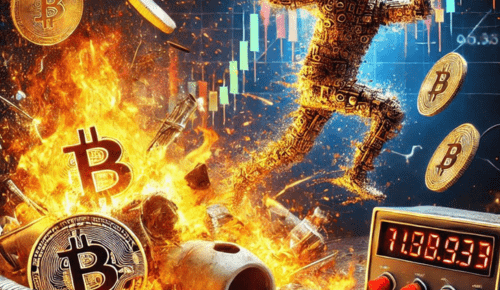In recent years, the skyrocketing price of Bitcoin has attracted widespread attention from global investors, especially between 2020 and 2021, when its price briefly broke historical highs. While many investors are delighted by this wave of price rise, it also raises questions about the Bitcoin market: does this mean that there is a foam in the Bitcoin market? Or are new opportunities emerging in the field of digital currencies? This article will delve into the multiple factors behind the skyrocketing price of Bitcoin and attempt to answer these questions.
The skyrocketing price of Bitcoin is not accidental, as it is driven by multiple factors. Firstly, the uncertainty of the global economy is an important catalyst. Especially after the outbreak of the COVID-19, governments of all countries implemented large-scale monetary easing policies, which led to the pressure of inflation on traditional financial markets. At this time, Bitcoin, as a decentralized digital asset, has become a “safe haven” for some investors to fight inflation, which has also led to an increase in demand for Bitcoin.
Secondly, the entry of institutional investors is another key factor. More and more institutions are starting to include Bitcoin in their investment portfolios. For example, companies such as Tesla and MicroStrategy announced the purchase of Bitcoin as an asset reserve, marking that Bitcoin is no longer just a game for individual investors, and the entry of institutional funds has accelerated the price increase.
Although the price rise of Bitcoin has its reasonable market background, the existence of foam cannot be ignored. Foam usually show that asset prices are separated from their intrinsic values and driven by speculation and excessive market sentiment. In the Bitcoin market, the excessive optimism of some investors, short-term speculation and excessive publicity of the media have exacerbated the formation of this foam.
The extremely high volatility of Bitcoin makes speculation in the market more apparent. In 2017, Bitcoin experienced a large-scale price surge and quickly fell back to its starting point, indicating that the price of Bitcoin may not be entirely supported by fundamentals, but rather by market sentiment and speculative behavior.
In the long run, many Bitcoin supporters believe that as global recognition of digital assets gradually increases, the value of Bitcoin will continue to rise. They regard Bitcoin as “digital gold” and believe that it can play a safe haven role in the global financial system like gold. The total supply of Bitcoin is limited, with only 21 million bitcoins, and this scarcity has made it a tool for inflation hedging to some extent.
The decentralized nature of Bitcoin also increases its attractiveness as a value storage tool. Unlike traditional monetary systems, Bitcoin is not controlled by any government or financial institution, which allows it to become a more independent asset class during global economic turbulence. This is also one of the reasons why more and more investors view Bitcoin as a long-term store of value.
In addition to being used as an investment tool, the blockchain technology behind Bitcoin is also gradually being widely applied. As a decentralized and tamper proof distributed ledger, blockchain technology has been widely applied in various fields such as finance, supply chain management, and digital identity. As one of the earliest blockchain applications, the technological potential of Bitcoin cannot be ignored.
In addition, the payment function of Bitcoin is gradually being improved. With the upgrade and expansion of the Bitcoin network, more and more merchants are beginning to accept Bitcoin payments, which provides the possibility for the popularization of Bitcoin as a payment tool. With the further development of technology, the application prospects of Bitcoin in the global financial system may become even broader.
For investors, in the face of the skyrocketing price of Bitcoin, they should not only see investment opportunities, but also be alert to possible risks. In the short term, the drastic fluctuations in bitcoin price mean that investors may face significant risks, especially when market sentiment is overheated. Investors should view the Bitcoin market rationally and avoid blindly following trends.
However, in the long run, Bitcoin, as an emerging digital asset, still has enormous potential. As global acceptance of digital currencies gradually increases, Bitcoin may continue to play its unique role in the financial sector. For investors who are willing to take risks and hold a long-term investment philosophy, Bitcoin may indeed represent a new investment opportunity.
Behind the soaring price of Bitcoin, there are both foam factors and its potential as an emerging asset class. From short-term market fluctuations to its long-term technological innovations, Bitcoin exhibits extraordinary complexity. For investors, finding a balance between risk and opportunity will be an important issue in the future Bitcoin market.

